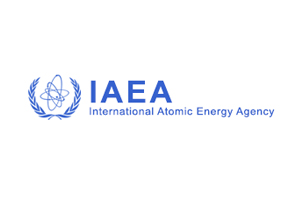
The Coordinated Research Project (CRP) aims to progress the understanding and modelling and simulation of major physical phenomena occurring in the strategy of In-Vessel Melt Retention (IVMR), which may be adopted for mitigating the consequences of a severe accident with core melting. It will aim at harmonising the international understanding of scientific and technological bases underpinning crucial parts of the safety demonstration of the IVMR strategy. Participants are expected first to develop a Phenomena Identification and Ranking Table (PIRT) and then a minimal experimental validation matrix for IVMR. Subsequently, the CRP will organise a series of benchmarks (which will include comparison of modelling and simulation results with experimental data – when available) representative of medium, as well as high-power reactors implementing IVMR, to mainly address the following: corium properties and stratification in the lower plenum of the reactor pressure vessel, heat transfer in stratified corium pools; external reactor vessel cooling and mechanical resistance of ablated wall.
Objectives
The general objective of the CRP is to harmonise the international understanding of the scientific and technological bases underpinning crucial parts of the safety demonstration of In-Vessel Melt Retention (IVMR). The output of the CRP will be disseminated in the form of IAEA publications and conference papers.
Specific objectives
- To develop an IVMR Phenomena Identification and Ranking Table (PIRT) and validation matrix.
- To progress the identification of relevant high-quality experimental data requested for the validation of computer codes for modelling and simulation of IVMR, including for recently developed and more advanced models (e.g. corium properties and stratification in the lower plenum of the reactor pressure vessel, heat transfer in the stratified pool; External Reactor Vessel Cooling, mechanical resistance of ablated wall).
- To improve the quality of modelling and simulation, through both an improvement of individual physical, thermomechanical and chemical models, and possibly an improvement of the methodology developed for lower- to medium-power reactors (traditionally based on the assessment of the heat flux on the vessel wall due to the molten corium pool, which is then compared to the critical heat flux).
- To harmonise the international understanding of R&D conclusions underpinning the safety demonstration of IVMR.
- Training and education of young engineers and scientists, including from embarking and developing countries.
Project participants:
Bulgaria
China
Finland
France
Germany
Lietuvos energetikos institutas, Lithuania
Pakistan
Republic of Korea
Russian Federation
Slovakia
Ukraine
Project Team
| Name, surname | Office | phone. | |
|---|---|---|---|
|
LEI Representative |
|||
| Mindaugas Valinčius | 255-AK | +37037401922 | Mindaugas.Valincius@lei.lt |
|
Project Team |
|||
| Algirdas Kaliatka | 223-AK | +37037401903 | Algirdas.Kaliatka@lei.lt |
| Tadas Kaliatka | 415-AK | +37037401911 | Tadas.Kaliatka@lei.lt |
| Virginijus Vileiniškis | 251-AK | +37037401928 | Virginijus.Vileiniskis@lei.lt |





